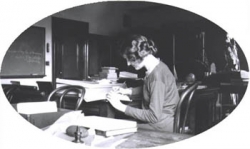Since 1996 SEM Northwest has awarded a prize each year for the best student presentation at the annual chapter meeting. A committee composed of three faculty members from at least two regional institutions evaluates presentations by students who have indicated interest in being considered for the prize. The winner receives a cash prize of $100.00, and her/his name and paper title are included in the chapter report to SEM (chapter prize winners are announced during the business meeting at the annual SEM conference).
Prize winners:
| 1996 | Claire Jones | University of Washington |
| 1997 | Joe Schloss | University of Washington |
| 1998 | Mei Han | University of British Columbia |
| 1999 | Lorraine Plourde | University of Washington |
| 2000 | Gavin Douglas | University of Washington |
| 2001 | Rob Carroll | University of Washington |
| 2002 (2 winners) | Gloria Wan | University of British Columbia |
| 2002 (2 winners) | Lou Winant | University of Washington |
| 2003 | Kimberly Bohannon | University of Oregon |
| 2004 | Ajay Kapur | University of Victoria |
| 2005 | Julia Day | Lewis and Clark College |
| 2006 | Melissa Parkhurst | University of Wisconsin |
| 2007 | Emily Afanador | University of Oregon |
| 2008 | Shalini Ayyagari | University of California, Berkeley |
| 2009 | Eliot Grasso | University of Oregon |
| 2010 | Kimberly Cannady | University of Washington/University of Copenhagen |
| 2011 | No award given | n/a |
| 2012 | Leslie Tilley | University of British Columbia |
| 2013 | Hilary Johnson | University of Washington |
| 2014 | Claire Anderson | University of Washington |
| 2015 | James B. Morford | University of Washington |
| 2016 | Andre Elias | University of Washington |
Who Was Thelma Adamson?
The prize is named for Thelma Adamson, one of the first women to conduct ethnographic fieldwork in the Pacific Northwest. Adamson was a student of Franz Boas in the mid-1920s while a graduate student in anthropology at Columbia University. During the summer of 1926 Adamson and fellow students Melville Jacobs and Otto Klineberg drove across the United Sates together to begin field research with Native American consultants in Washington state. For three months Adamson lived and worked in and around Oakville in the southwest part of the state collecting Upper Chehalis and Cowlitz folktales.
The following summer Adamson returned to Oakville and concentrated on collecting ethnological data as well as working on the Cowlitz dialect. Boas also came to Oakville that summer to do field research, and during that time he and Adamson recorded numerous songs by local consultants on wax cylinders (now at the Archives of Traditional Music at Indiana University).
On Boas’ recommendation, the University of Washington hired Adamson and Jacobs as “Associates in Anthropology” in 1928. Jacobs remained on the Anthropology faculty until his death in 1971 — teaching, conducting field research in Washington and Oregon, and building a collection of recordings. Adamson taught one course during spring term 1928 — “Indians of the Northwest Coast” — and did field work on the Nooksack language that summer, but resigned from the University of Washington in September following her marriage to Edward Salant (it’s likely that she’d been married already when she took the position at UW but was reluctant to tellBoas).
The rest of the Thelma Adamson story is a sad, even tragic one. In 1929 she became ill with tuberculosis and recovered slowly in a sanitarium. Her dissertation, “Trickster and Transformer Myths of the Coast Salish,” was approved in May 1929 but never deposited at Columbia or published (a requirement at the time). Adamson returned to Nooksack in 1932 as part of an acculturation study directed by Ruth Benedict, but the whereabouts of her field notes from this trip, as well as those from her 1928 stay, are unknown. Adamson’s Folk-Tales of the Coast Salish, including song transcriptions by George Herzog, was published in 1934, but by then her scholarly career was over. She had begun to suffer from mental illness (possibly what would now be diagnosed as bipolar disorder) and was institutionalized in 1942. Until her death in 1983 at the age of 82, she lived as an invalid.
(All biographical information about Thelma Adamson presented here comes from “Whatever Happened to Thelma Adamson? A Footnote in the History of Northwest Anthropological Research,” by William R. Seaburg, Northwest Anthropological Research Notes 33:1(1999):73–83)
Thelma Adamson Prize Guidelines
1) The Call for Papers should include a place for students to indicate that they want to be considered for the prize; a student will not be considered unless the registration form so indicates.
2) Students should be current student members of SEM to qualify for theprize.
3) Students should be in good standing at a college or university in the Northwest region to qualify for the prize.
4) Students who indicate that they wish to be considered for the prize should be notified that they need to submit 3 copies of their paper and supporting audio-visual material at the registration table before the first session of the meeting. The paper submitted must be that which is actually delivered at the conference and not an expanded version.
5) The evaluation committee will consist of the chapter president and two other faculty members, with at least two institutions represented.
6) The announcement of the prize winner should take place as soon after the meeting as possible. The chapter president should first notify all contending students of the results. The chapter secretary should then be notified in order to include this information in her/his official report to the SEM Newsletter and officers. The results should also be transmitted to the membership on the SEMNW email list.
